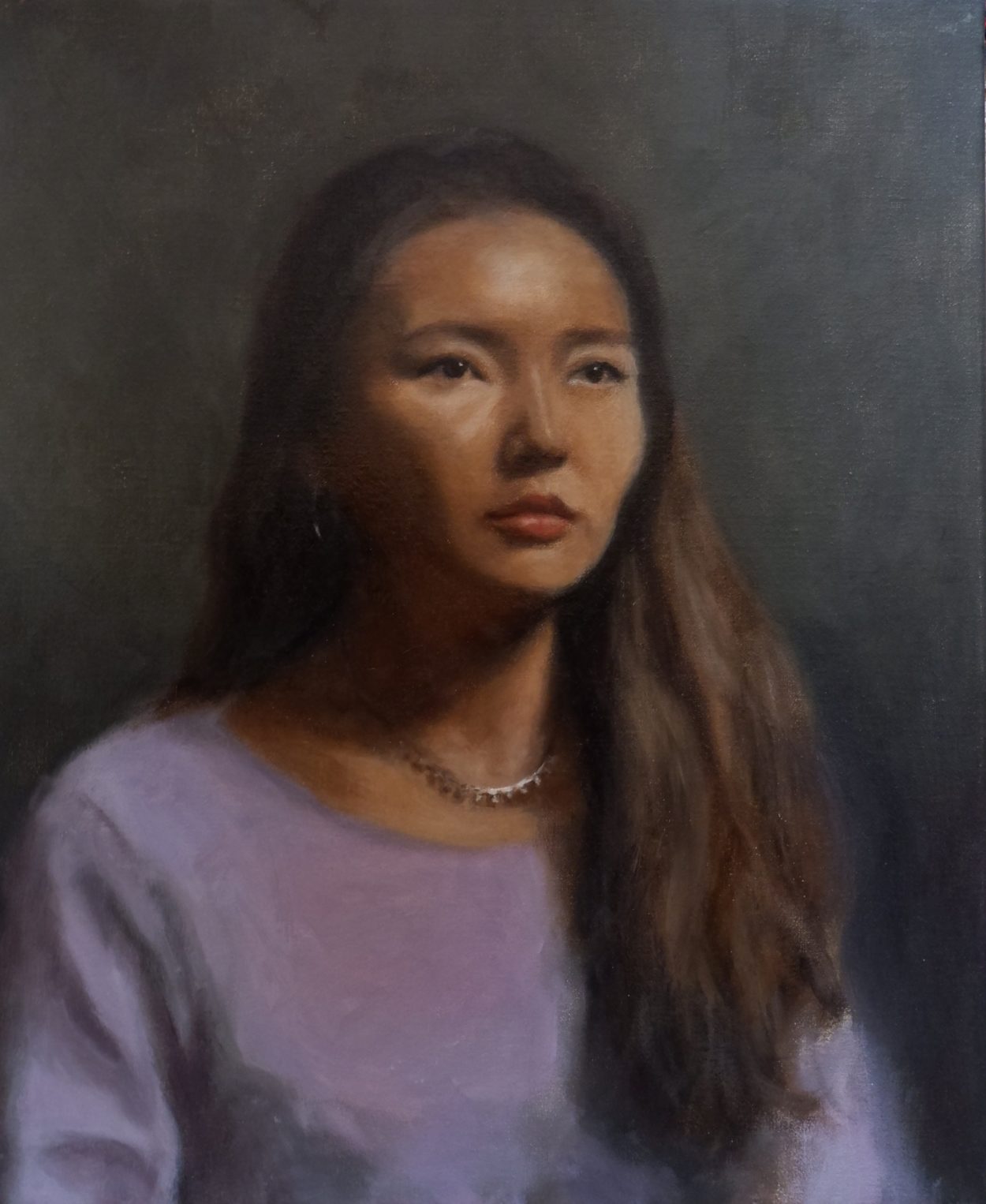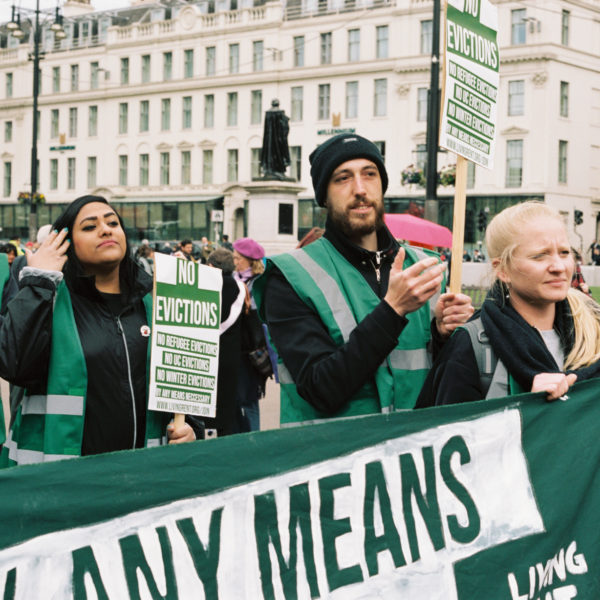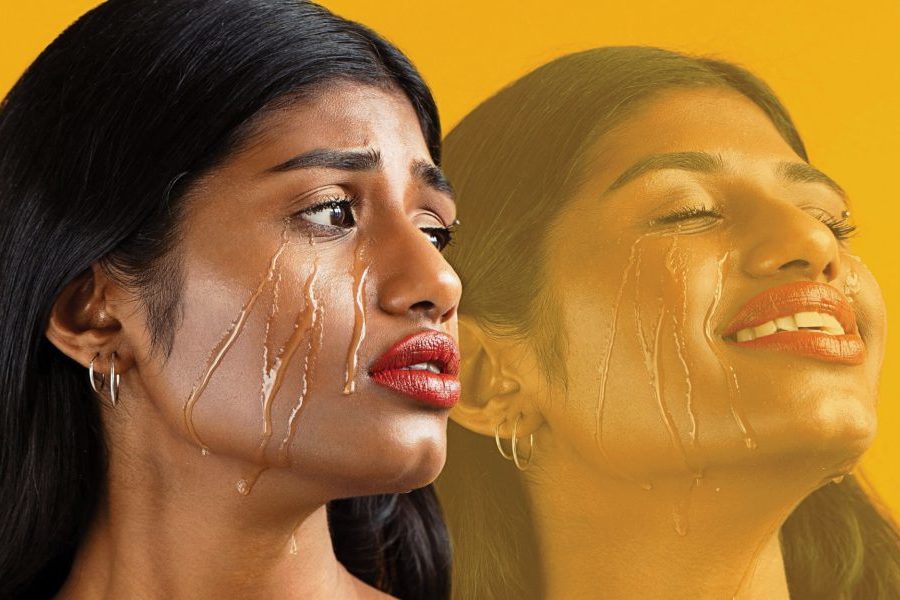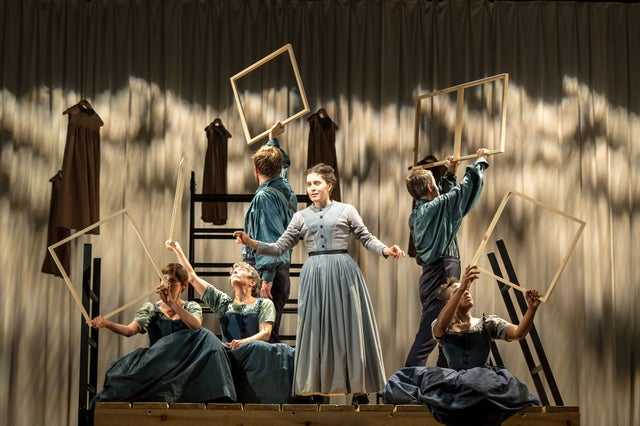There are some people out there who are blessed to know exactly what they want to do from a young age. Luckily for us, Grace Payne-Kumar is one of them.

About Faces: In conversation with Grace Payne-Kumar
“I loved painting and wanted to be a painter throughout school, and my mum was very encouraging of this when I was younger,” she says having just come out of the library, studying for a degree in her other great love, English literature. Grace’s self-assurance of what she wants runs so deep that not only did she know that she wanted to paint, but that classical portraiture was the one for her. “I was routed in the old masters, and obsessed with John Singer Sargent. And when I visited Florence, initially to visit a friend who was also studying at Charles H. Cecil Studios, I was just immediately sold. I couldn’t think of anything else I wanted to do.”
It’s a beautifully romantic outlook to have, and you can see that passion, followed by long hours of hard work and training, come through in her art. Her style shows great discipline, especially for how light falls on skin; which is something to be recognised when in her first year at Florence she was only allowed to draw in monochrome in order to really master light tones.
It’s important to note that while this art form has been around for centuries, like many other forms of western traditional culture, it has been largely been dominated by white male aristocrats, both in front of and behind the canvas. “Especially in Florence in a private art school most models tend to be white men, and portraiture is understood to be for ‘just’ the rich and noble. I’d like to reshape that. I have been the only woman in the room sometimes, definitely the only person of colour in the room, but I’ve had good experiences nevertheless, and I think it’s a pertinent time to be a woman of colour artist. You can use art to make social and political commentaries and that’s something I’m really interested in.”
Since leaving Florence, and coming to Edinburgh for studies in 2019, Grace has gone on to win the Member’s Choice Award for the Scottish Portrait Awards and has been nominated by the Scottish Arts Club to paint the first female Lord Clerk Justice, Lady Dorrian. It only seems fitting that her debut exhibition follows such an impressive trajectory.
About Faceis a collection of sight-sized portraits from Grace’s time in both Florence and Edinburgh, showing at a never-before used exhibition space at the Scottish Arts Club. “The exhibition is a series of paintings from the past three years, and three lockdowns in two cities which have influenced my work so much. I thought it would be interesting to put them all in the same room together, and I never felt like they were cohesive until that moment they were all hanging on the walls. I remember thinking: who is that crowd of individuals and how do they know each other?”
The portraits show a range of both strangers and those closest to Grace. “I find painting people I know easier because I just know from my mind’s eye I have a clear image of their face. Although having said that, painting my boyfriend, Tom, worried me at first because I thought I would try to put into it things I imagined to be there; try to represent something intangible and have it come out strange. But I stuck to life, and that is my favourite one of the exhibition.”

Portrait of Tom
Not only is the art in this exhibition impressive, highlighting Grace’s ability to paint both likeness and introduce character to her subjects, but with every portrait comes a lovely note written by Grace herself about the model and what the piece means to her. A particular notable one was: Oli is an old friend from school who moved out from Madrid this summer to model in Florence. His signature glare fortifies an individual who is anything but intimidating, simply hardened by life’s short spells of unrequited love.

Portrait of Oli
“One of the paintings also comes with poetry from the model. It’s from my time at Charles H. Cecil Studios, he was dressed up as a character and we were asking, “who is this this guy? A soldier, an artist, a poet?” He replied that he was definitely a poet, and then decided to also write his own Keats-styled poem to go along with it!” For want of not giving everything away, you can find that poem yourself at the exhibition.
The exhibition is impressive without being ostentatious, and is a beautiful homage to Grace’s development as an artist over the past three years. Her style shows how she’s unafraid to reveal hidden qualities of a character beyond the superficiality of the face, but is keen to not impose a forced narrative on her subjects. They are very truthful in nature, and shows Grace’s sincerity as a painter.
And for budding young artists out there who should certainly find inspiration in Grace, what would the best advice be? “I heard someone say this in the summer and it has stuck with me since: get an early night. You’ll catch the best light in the mornings, and like any other form of work you shouldn’t be tired before you paint. And confidence. I’m lucky I haven’t experienced imposter syndrome in feeling like a token because I put so much into my art. As the artist you are the front person for your art, so if you don’t have confidence in your art how can you expect anyone else to? You must think it’s worthy of being out there and be unafraid to show it, otherwise it will always just be a hobby.”
‘About Face’ is open to the public until 30th October 2021, and free tickets are available at https://october-exhibitions.eventbrite.co.uk






Leave a Comment